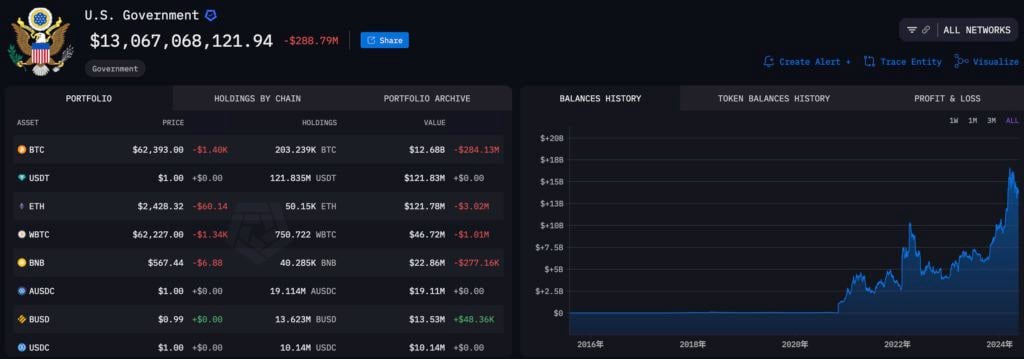![图片[1]-Will there be a rebound by the end of the year? Standard Chartered analyst: The Bitcoin sell-off is about to end.-OzABC](https://www.ozabc.com/wp-content/uploads/Create-an-image-of-Bitcoin-will-be-rebound-by-the-year-end-from-drop-732x550.webp)
Analysts’ view: A third significant pullback of nearly 30% is becoming the norm.
Kendrick points out that this pullback is not unusual, but rather the third significant correction of nearly 30% since the official launch of spot Bitcoin ETFs in the US last year. He believes that such sharp drops are structurally more like a fixed rhythm in Bitcoin’s long-term upward cycle; whenever the market experiences short-term overheating and leverage accumulation after reaching new highs, it can trigger a similar rapid cleansing. He describes this pullback as a familiar pattern, and its scale is almost identical to the previous two. On Tuesday, Bitcoin briefly fell below $90,000, exacerbating the overall decline and pulling back nearly 30% from its all-time high of over $126,000 in early October. This is the most dramatic drop since the launch of spot ETFs in the US, prompting the market to reconsider whether Bitcoin has entered a typical consolidation or even bear market phase in its four-year cycle. Nevertheless, Kendrick believes that current market data suggests selling pressure may be waning.
![图片[2]-Will there be a rebound by the end of the year? Standard Chartered analyst: The Bitcoin sell-off is about to end.-OzABC](https://www.ozabc.com/wp-content/uploads/will-there-be-a-rebound-by-the-end-of-the-year-standard-chartered-analyst-the-bitcoin-sell-off-is-about-to-end.jpg)
Strategy’s mNAV indicator shows the relationship between stock price and average Bitcoin holdings.
Among the series of market indicators tracked by Kendrick, Strategy’s mNAV is one of the most symbolic signals recently. This company, due to its years of aggressive Bitcoin buying, is considered a “Bitcoin leverage indicator” in the traditional stock market. Its Adjusted Net Asset Value (mNAV) measures the gap between the stock price and the actual value of its Bitcoin holdings. When market sentiment is extremely euphoric, MSTR’s stock price often trades at a premium to its Bitcoin book value; conversely, it may trade at a discount during periods of panic.
Analysts often use mNAV to observe market sentiment:
The higher the mNAV, the hotter the market.
mNAV dropping to 1 or below indicates widespread panic, near surrender, and the potential end of a major decline.
Is Strategy (MSTR) worth its current share price? The company’s main asset is its large holdings of Bitcoin. If we calculate the cash value of all of MSTR’s Bitcoin and compare it to the company’s share price, we can determine whether the market is overvaluing, undervaluing, or undervaluing it.
Overvaluation (premium): The public is too crazy, and the stock price is overvalued to be more expensive than the actual value of Bitcoin.
Undervalued (discounted): Market panic, the stock price is cheaper than the market value of the Bitcoin held.
Fair valuation (mNAV=1.0): The stock price just reflects the value of holding Bitcoin.
mNAV = 1.0 means that the company’s current market capitalization is roughly the true value of Bitcoin assets, and it is neither overvalued nor undervalued.
Currently, mNAV has retested to 1, meaning the stock price almost perfectly reflects the net value of its Bitcoin holdings, with neither a premium nor a discount. For Kendrick, this is an extremely important signal, indicating that market risk appetite has been completely reset. He describes other indicators also simultaneously sliding to “absolute zero,” suggesting the market has entered a typical “capitulation sell-off” phase, which is usually a necessary condition before a bear market bottom appears. He therefore judges that this plunge should be nearing its end.
Kendrick’s observations align with recent analysis from cryptocurrency exchange Bitfinex. Bitfinex points out that on-chain data has shown signs of capitulation, including a reduction in losses for short-term holders and a slowdown in the momentum of realizing losses on-chain. These indicators often suggest that the most intense selling pressure has passed, and the market is gradually entering a stabilization phase. Historically, these on-chain signals have often preceded price reversals.
After a period of intense market volatility, Bitcoin briefly rebounded below $93,000 on Tuesday, recovering approximately 3.8% from its overnight low. While the rebound remains fragile, Kendrick emphasized that this aligns with his basic expectation of a year-end rally. He believes that with continued long-term capital inflows, improved ETF structure, and accumulation by long-term holders, Bitcoin still has the potential for a year-end counterattack. Kendrick concluded his report by stating that he believes the basic pattern of this sell-off is complete, and if Bitcoin continues its performance after previous corrections, a rebound before the end of the year remains the most likely scenario. As the market gradually digests the selling pressure, the coming weeks will be crucial in validating these arguments. Among various indicators, the continued changes in Strategy mNAV, the behavior of short-term on-chain holders, and the flow of funds in spot ETFs will be important clues for investors to determine whether Bitcoin has truly bottomed out.

















